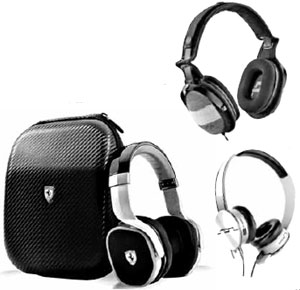Style, not sound, helps drive demand for high-end headphones
Updated: 2013-03-24 07:57
By Roy Furchgott(The New York Times)
|
|||||||

If you are planning a $200 splurge on premium headphones - as millions of people are this year - who will give you the most for your money? Maybe a rapper like Dr. Dre, 50 Cent, Nick Cannon or Ludacris?
Or will you get better sound with headphones branded by rockers like Motorhead or inspired by the reggae artist Bob Marley?
This is how headphones are marketed these days - affinity headphones, if you will. Headphones are in high demand. The Consumer Electronics Association estimates 79 million were sold last year, and it predicts 10 percent more than that will be sold this year. But the category of headphones costing more than $100 is growing even faster - 64 percent, according to market analysts at the NPD Group.
That is wonderful news for retailers who feel their profit margins squeezed on laptops, televisions and most other electronic products. "Retailers can make more on a high-end pair of headphones than they can make selling a smartphone in many instances," said Ross Rubin of Reticle Research, a consumer electronics research firm.
Knowing what's behind the marketing can help a consumer avoid the hype. Headphone designers estimate the cost of making a "fashion headset" selling for $200 is as low as $14. "I would have guessed $20 to $22," said Tim Hickman, whose California Headphone Company and Fanny Wang Headphone Company brands are made in China.
"When you look at a $300 Beats headphone, how much does it cost to tool the enclosure, how much does it cost to stamp the thing out?" said John Chen, director of sales for the audio manufacturer Grado Labs. "Stamping it out is pennies."
"I wish that were true," said Noel Lee, founder of Monster Products, which until December produced Beats by Dr. Dre headphones. "I'm going to say it's in the $40 and up range to make a quality product."
The growth in pricey headphones is yoked to the growth of tablets and phones. IPods and other media players come with basic earphones, but the expanded menu of music and video apps now available encourages people to replace those with higher-quality headphones.
The rush into premium headphones was set off in 2008 by the Beats by Dr. Dre brand. Headphones had traditionally been sold on technical specifications like frequency response, but Beats created appealing designs in an array of colors. It also tweaked the headphones to stress the bass.
Monster lost the rights to make the Beats, but has introduced 12 of its own headphones, none with a celebrity name on the brand, although some have celebrity endorsers. NPD found that celebrity endorsement was important to 30 percent of consumers, and was the top factor driving purchases of headphones costing more than $100. Consumers say they want sound quality, but brand counts heavily too.
"Basically good-enough sound is good enough if everything else is in line, like brand and color," said Benjamin Arnold, a consumer electronics industry analyst for NPD. "You see young people walking around the mall with them around their necks. They aren't even on their ears."
Not all headphones work on the same economics as the fashion brands. Classic brands like AKG, Shure, Audio-Technica, Grado and Klipsch still market based on realistic sound and value. With no celebrity endorsers to share profits and a nearly unlimited shelf life, because the style does not change, the marketing model is different.
Grado Labs' SR80i headphones, which have remained largely unchanged since they were introduced in 1991, sell for about $100.
In general, fashion headphones may not be a value sonically.
"These designer headphones are sort of flavor of the month, and people will get tired of this sound eventually," said Jim Anderson, a Grammy-winning audio engineer. "That's why you won't see professionals using this equipment in studios."
Mr. Anderson said consumers should look to the tried and true. "There are certain models of headphones that have lasted years and years," he said, citing the Sony MDR 7506 headphones, which cost $100, and are a standard model for audio engineers. He personally uses Sennheiser HD 650s, which retail for about $500. TheWirecutter.com likes the $140 Audio-Technica ATH-M50.
When buying, consider your preference for in-ear, on-ear and over-the-ear designs, keeping in mind that over-the-ear headphones are most likely to leak sound.
"Fit is everything," Mr. Anderson said, The headset needs to sit comfortably on or over your ears, snug but not too tight.
Only then does sound become the priority. The best way to test headphones is to get several pairs together for comparison and to have your own music on hand.
"If you know the track, sometimes when you get a new headphone or speakers, you start hearing things you never heard before," Mr. Anderson said. "That is a good sign."
The New York Times
(China Daily 03/24/2013 page10)